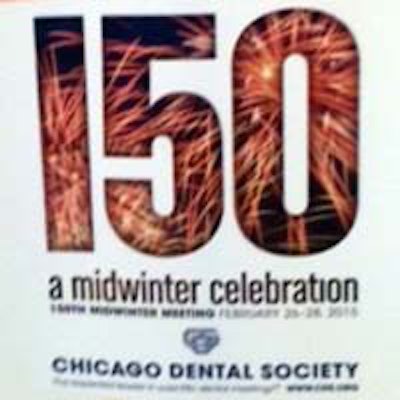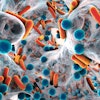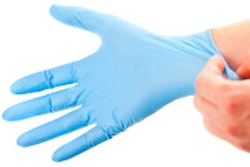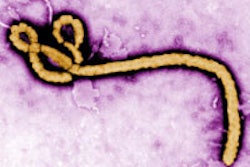
CHICAGO - The Organization for Safety, Asepsis and Prevention (OSAP) announced at the 150th Chicago Midwinter Meeting that it will launch the Safest Dental Visit infection-control education program this spring. The effort includes a coalition of clinicians, product manufacturers and distributors, and infection-control educators/communicators who will work together to ensure patient safety, a safe practice environment, and positive behavioral change.
"We think it's a patient's right that when they come in for any kind of procedure, it's done safely," explained OSAP Executive Director Therese Long to a well-attended early morning session.
 Therese Long, OSAP executive director, introduced the Safest Dental Visit infection-control education program at the 2015 Chicago Midwinter Meeting.
Therese Long, OSAP executive director, introduced the Safest Dental Visit infection-control education program at the 2015 Chicago Midwinter Meeting.Basic infection-control measures didn't start until the early 1900s, when dentists began using bibs on patients, Long noted. And it wasn't until the 1980s that dentists started using protective face masks.
Infection control by dentists gained national attention following news that a Florida dentist who had AIDS, David Acer, DDS, had infected six patients with HIV. The incident became the first known case of clinical transmission of HIV. Kimberly Bergalis, a 23-year-old patient who contracted the disease after Dr. Acer removed two of her molars, died in 1991. The U.S. Centers for Disease Control and Prevention (CDC) identified 10 HIV-positive former patients and linked the infections of six to Dr. Acer. The AIDS epidemic finally ushered in the widespread use of gloves by healthcare professionals.
Nearly 2,000 people in five states were urged to get hepatitis B tests after patients and volunteers at a free dental clinic in West Virginia contracted the blood-borne disease in 2010. Following that incident, OSAP developed checklists for staffers at Mission of Mercy dental clinics, which regularly hold clinics across the U.S. that attract thousands of people without access to dental care.
And in 2014, 100 patients tested positive for hepatitis and HIV after being exposed to blood-borne viruses during procedures by Oklahoma oral surgeon W. Scott Harrington, DMD. Investigators found numerous violations of health and safety laws, including the use of rusty instruments on patients known to have infectious diseases.
OSAP's new program will help dentists address new threats, such as the recent outbreak of measles, methicillin-resistant Staphylococcus aureus (MRSA), and Ebola, Long said. OSAP has developed a Safest Dental Visit (SDV) certification program, and the three-year campaign will focus on designating an infection-control coordinator who will be responsible for infection control in the dental practices.
For dentists, program benefits include elevating patient confidence in the practice, increasing patient loyalty, and attracting new patients, according to Long. It will also engage staff in a culture of education, foster a safe and professional environment, and enhance the overall image of dental practices.
Long invited companies to become corporate members, noting they will get added visibility to showcase their infection-control products while providing resources about the initiative.
A program symposium will be held May 28-30 in Baltimore, which will kickoff National Infection Control Awareness Month.



















